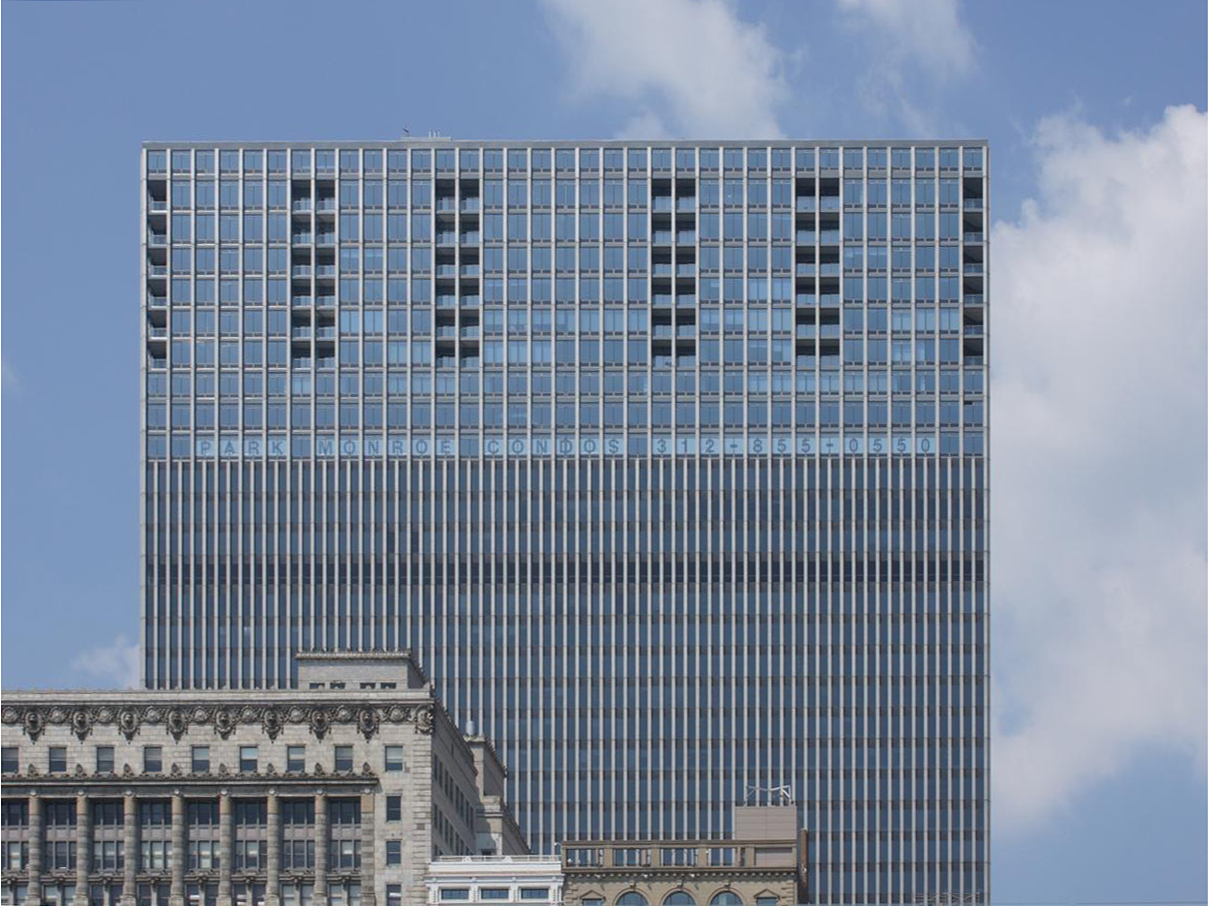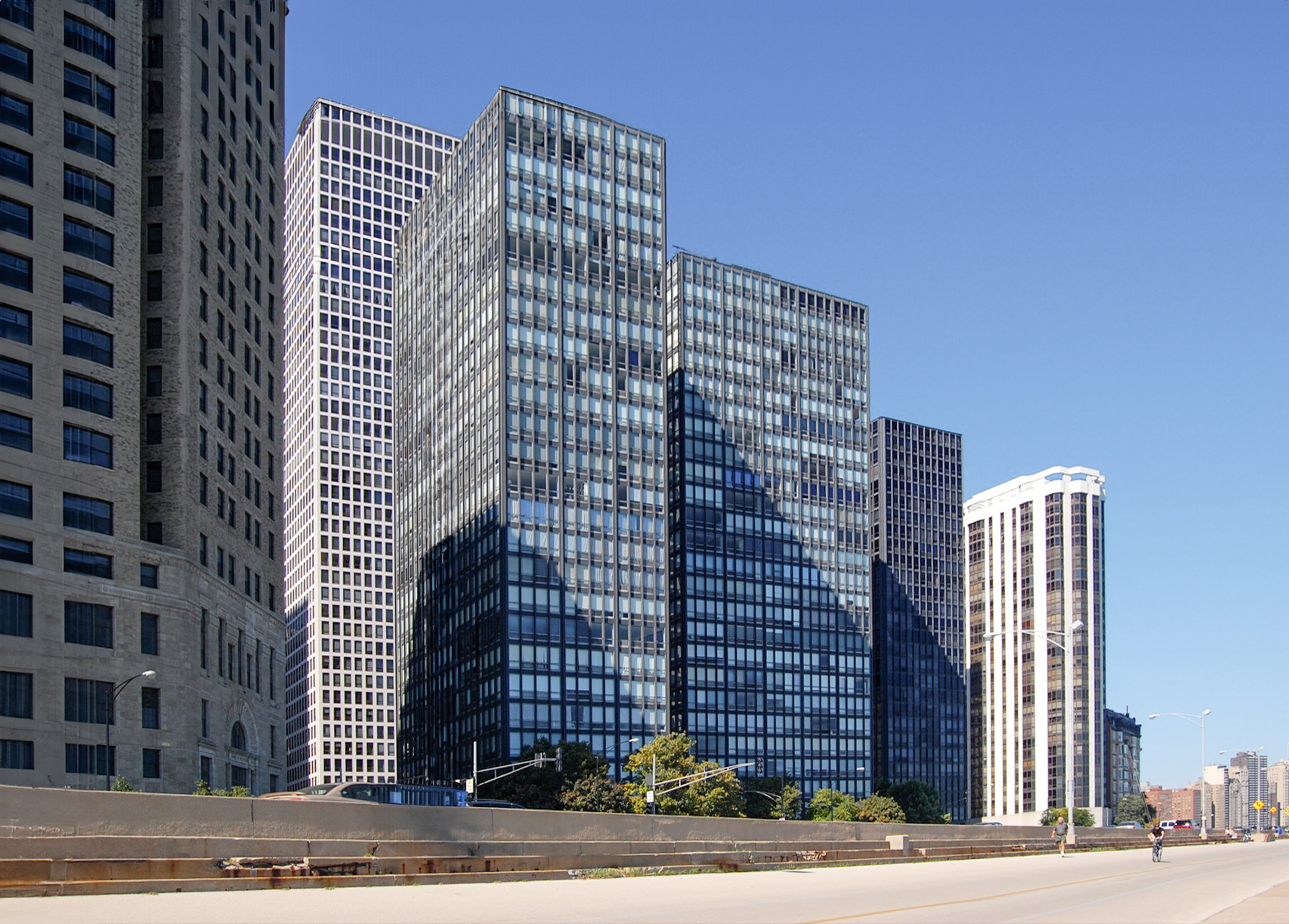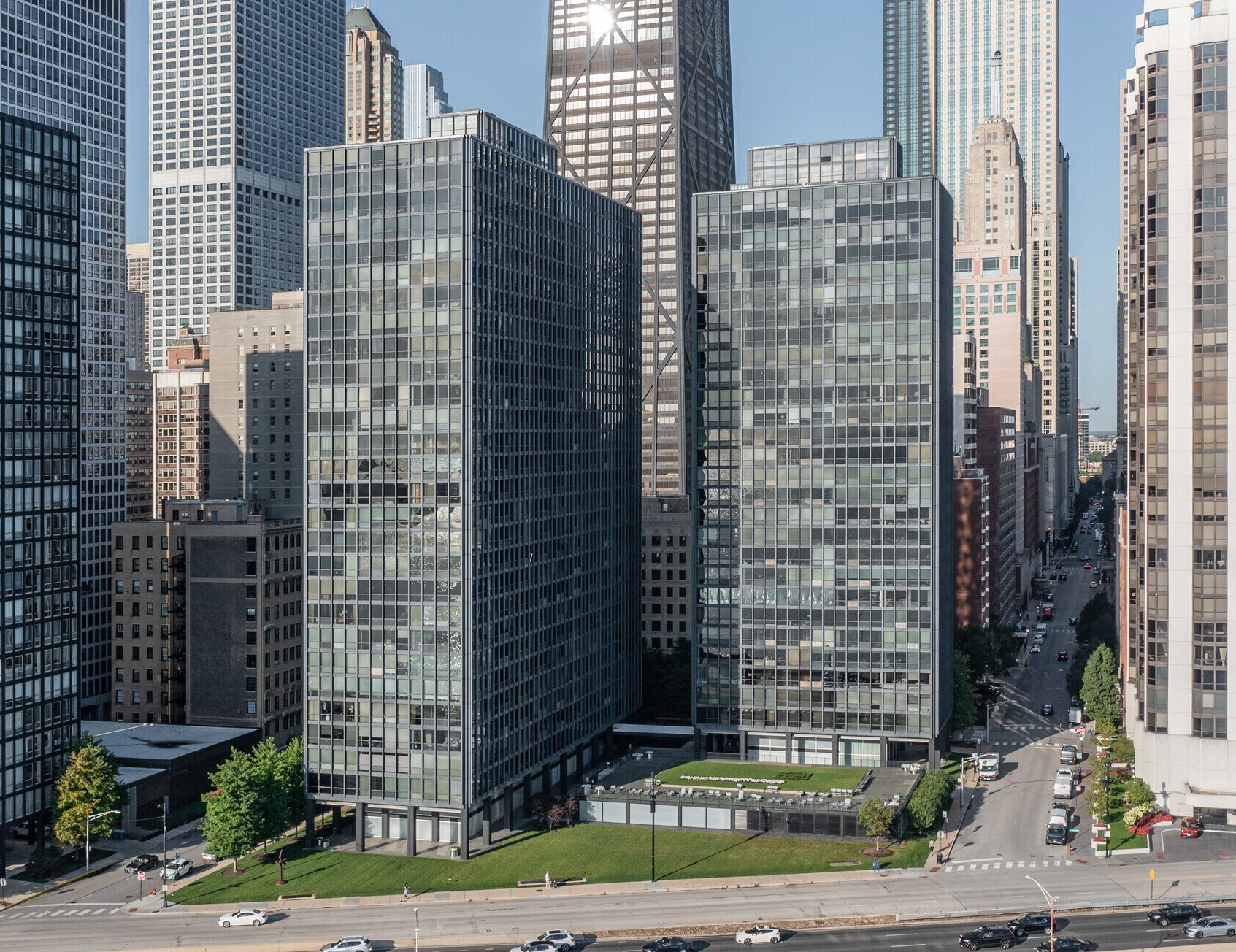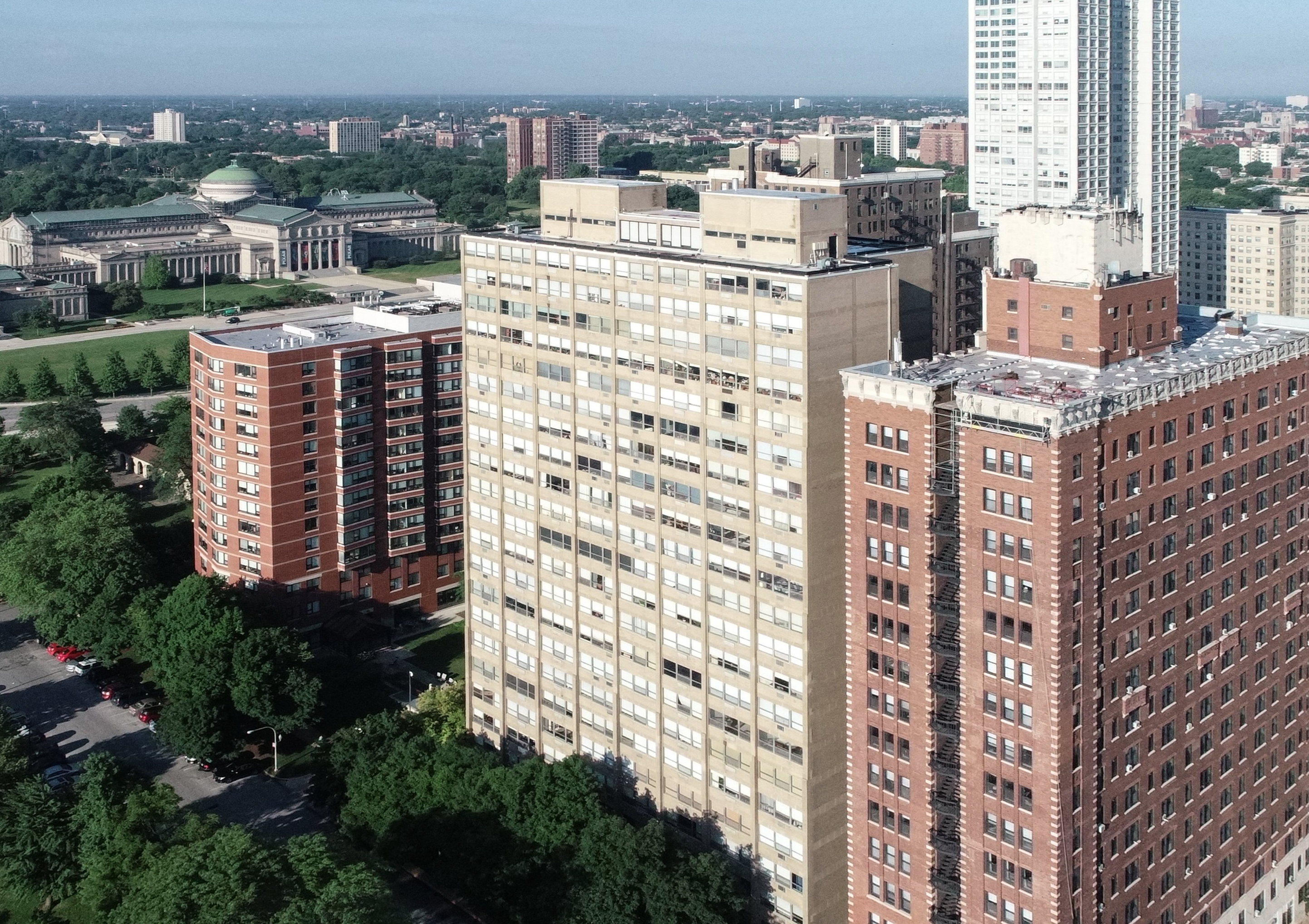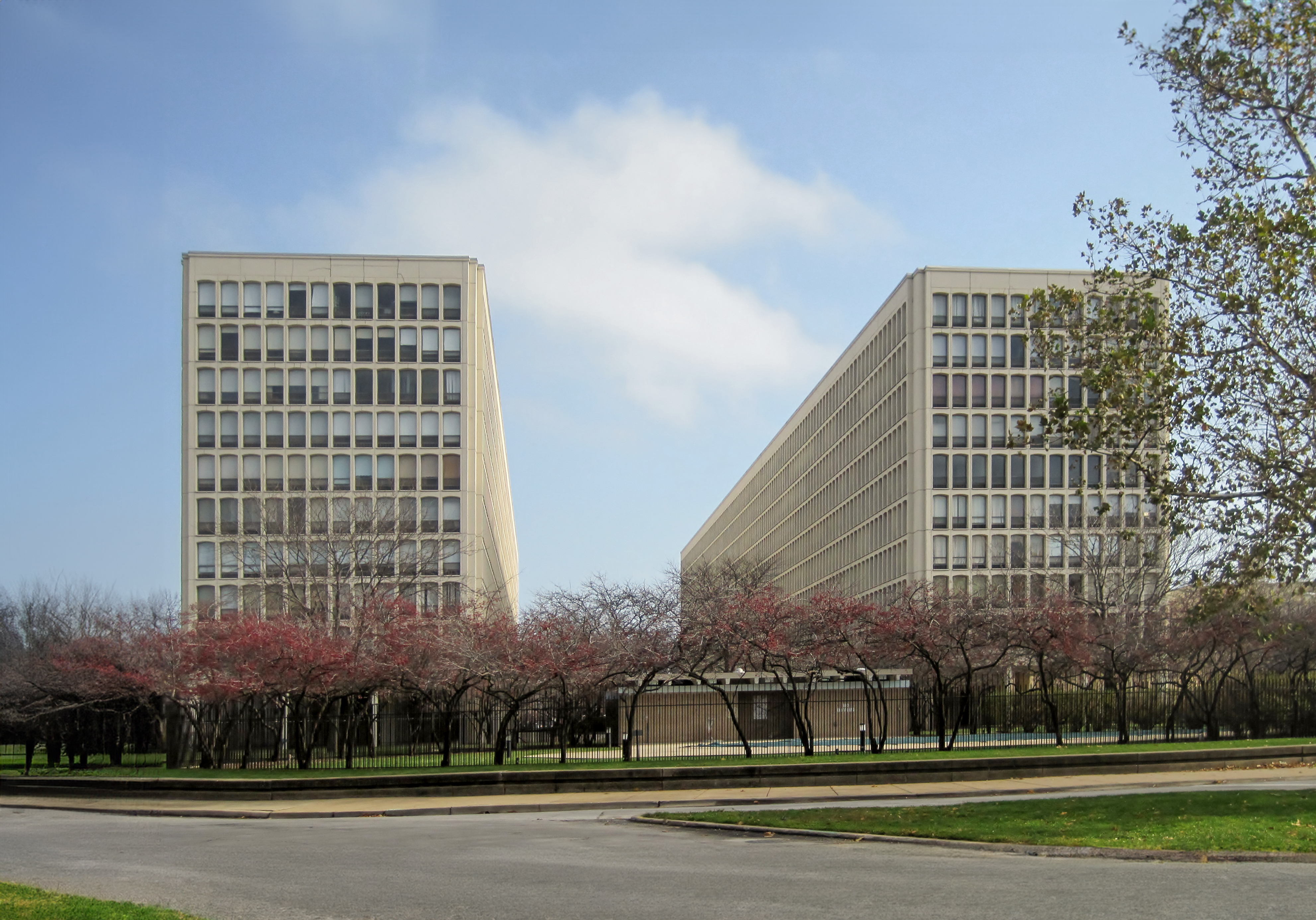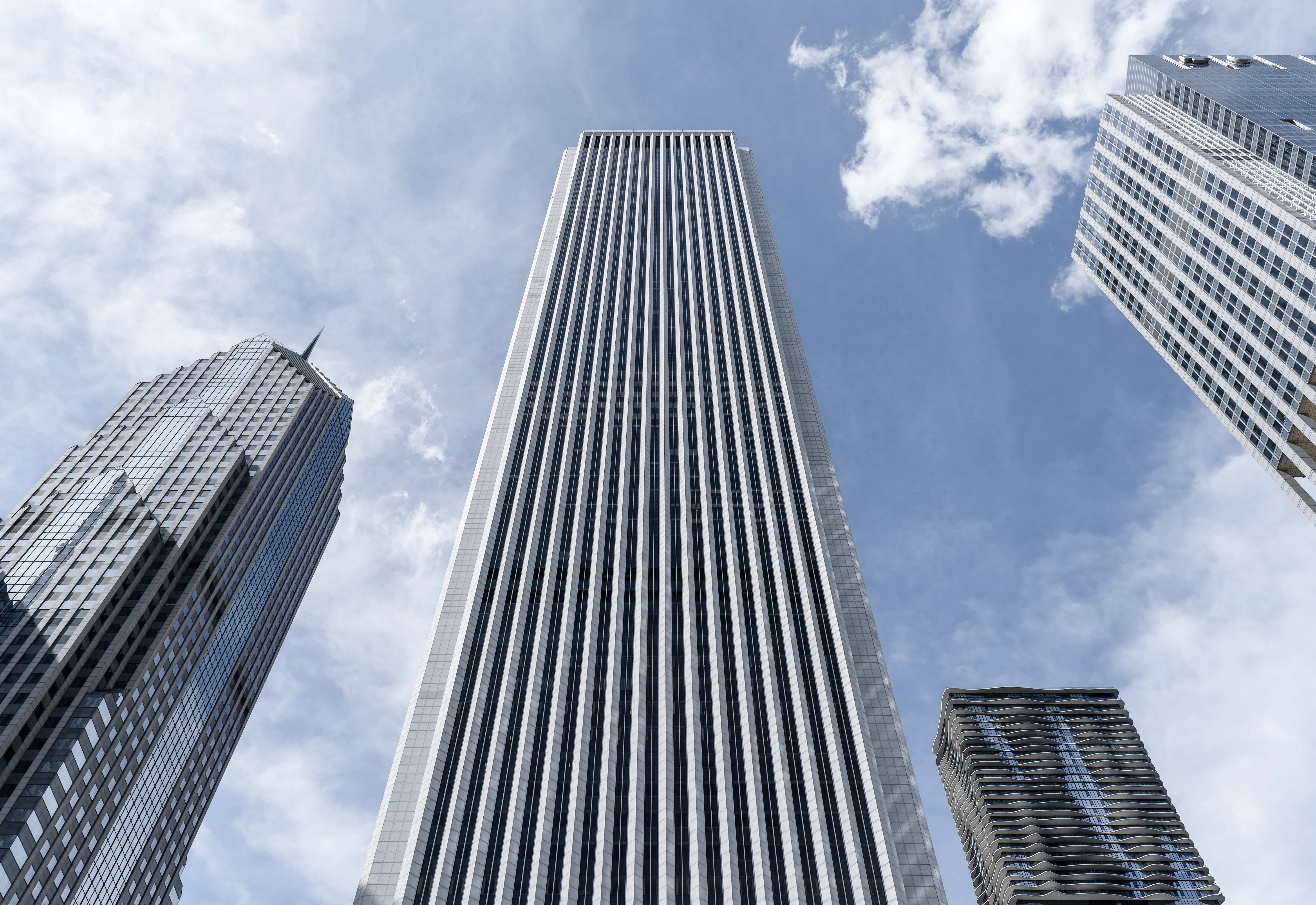The Mid-Continental Plaza is an International Style skyscraper designed by Shaw and Associates, and built between 1969 and 1972 in Chicago, IL.
Mid-Continental Plaza is not the only name you might know this building by though. It is common for companies to want to attach their names to iconic buildings when they move in, or for the general public to come up with nicknames, and this one is no exception. The building has changed names several times over the years, and is also known as:
- The Park Monroe.
- 55-65 East Monroe from 2013 until this day.
Its precise street address is 55 East Monroe Street, Chicago, IL. You can also find it on the map here.
The two-story lobby with gardens and artworks, accessible through three different entrances, allows the public to move between Monroe and Adams streets, giving something back to the public space.
The building underwent a major restoration in 2013. The architect commissioned to undertake this restoration was Pappageorge Haymes Partners.
